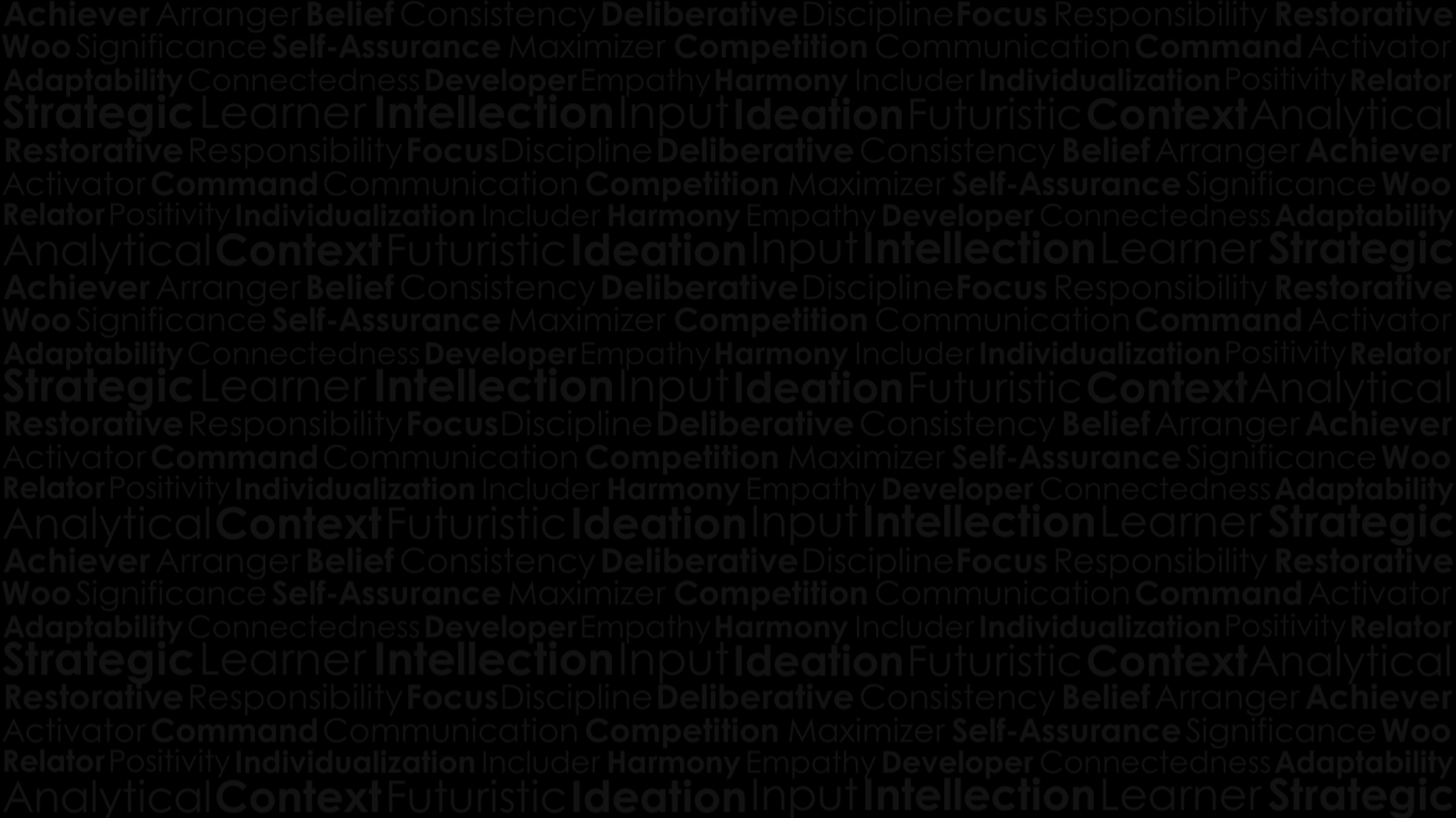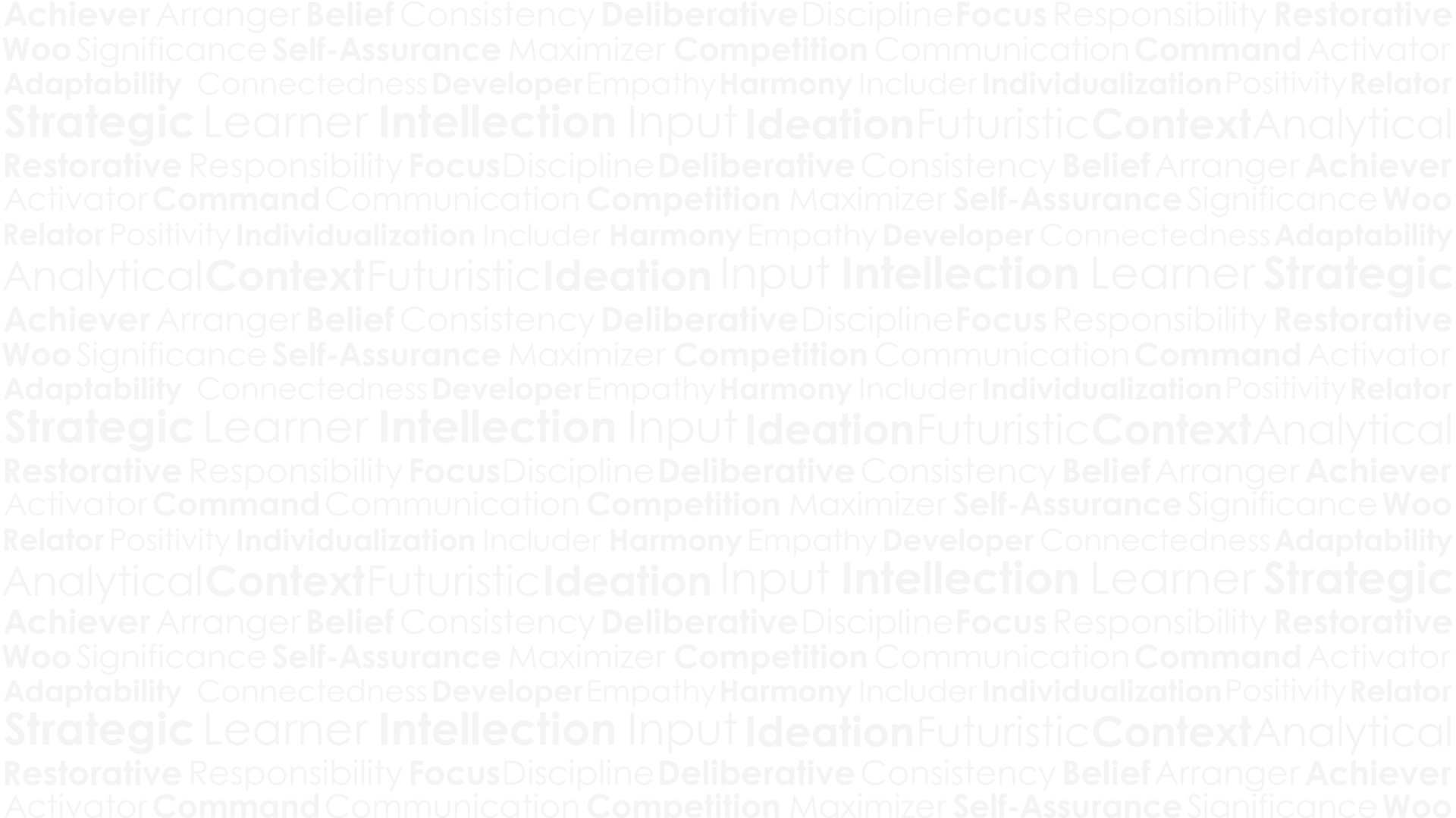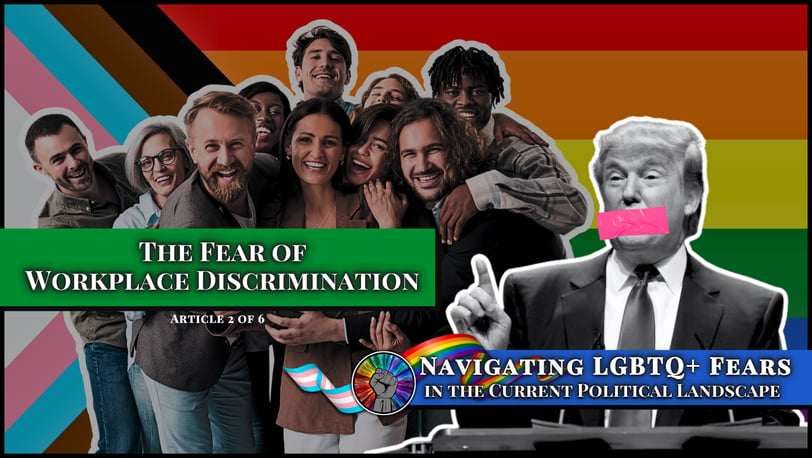
The Fear of Workplace Discrimination: Standing Strong in Your Career
In part 2 of this 6-part series, we explore how understanding and leveraging your strengths can help combat workplace discrimination and foster a more inclusive and authentic professional environment.
Miles Berdache Lynk
3/7/20256 min read



Understanding the Fear
Workplace discrimination for LGBTQ+ professionals often manifests in subtle yet pervasive ways, making it a source of constant stress and fear. Despite legal progress, such as the 2020 Supreme Court decision affirming that Title VII of the Civil Rights Act protects LGBTQ+ employees from discrimination, the reality remains complex. Despite progress, workplace discrimination remains a significant concern. The Trump Administration weakened federal protections for LGBTQ+ workers by allowing religious exemptions for employers, leading to increased bias in hiring, promotions, and job security. Many professionals feel pressure to hide their identities to avoid career setbacks.
This fear isn’t just about the risk of being fired—it’s about the fear of being overlooked for promotions, excluded from leadership opportunities, or being subjected to microaggressions that chip away at confidence and authenticity. The emotional toll of code-switching, hiding one’s true self, and the energy spent navigating these dynamics can lead to burnout, decreased job satisfaction, and limited career growth. Recognizing this fear is the first step to reclaiming power and making proactive choices that align with your authentic self.
Proactive Actions to Take
Research Employers: Seek LGBTQ+-Inclusive Companies
Why It Matters: Choosing to work for an employer that prioritizes inclusion can significantly reduce the stress associated with workplace discrimination. Companies that score high on the Human Rights Campaign’s Corporate Equality Index (CEI) have demonstrated their commitment to LGBTQ+ rights through comprehensive policies, benefits, and training.
Action Steps:
Explore the Corporate Equality Index: Review the latest CEI to identify companies with a strong track record of supporting LGBTQ+ employees. Look for those with benefits like transgender-inclusive healthcare, non-discrimination policies, and LGBTQ+ resource groups.
Analyze DEI Initiatives: Visit potential employers' websites and read their Diversity, Equity, and Inclusion (DEI) reports. Pay attention to the language used, the presence of LGBTQ+ leaders, and their response to social justice issues.
Use Employer Review Sites: Platforms like Glassdoor, Indeed, and InHerSight often have employee reviews that discuss real experiences with diversity and inclusion. Search for keywords like “LGBTQ+,” “inclusion,” and “DEI” to gain deeper insights.
Pro Tip: Prepare a list of questions to ask during interviews that subtly probe a company’s commitment to LGBTQ+ inclusion. For example: “Can you tell me about your DEI initiatives and how they impact company culture?”
Build Allies: Connect with LGBTQ+ Employee Resource Groups (ERGs)
Why It Matters: Allies amplify voices and create a network of support that can make the workplace safer and more inclusive. Connecting with ERGs or LGBTQ+ networks provides not only a sense of community but also opportunities for mentorship, professional development, and advocacy.
Action Steps:
Join or Form ERGs: If your workplace has an LGBTQ+ ERG, consider joining to connect with peers and stay informed about internal advocacy efforts. If one doesn’t exist, explore the possibility of starting one with HR’s support.
Find Mentors and Allies: Seek out mentors—both LGBTQ+ and allies—who can provide guidance, share experiences, and advocate on your behalf. Allies in leadership positions can also influence policies and culture.
Leverage External Networks: Platforms like Out & Equal, LinkedIn LGBTQ+ groups, and professional associations offer additional resources, networking events, and mentorship programs.
Pro Tip: Regularly engage with ERG activities or initiatives. This not only helps expand your network but also showcases your leadership potential and commitment to fostering an inclusive workplace.
Advocate for Change: Work with HR to Promote Inclusive Policies
Why It Matters: Advocating for inclusive policies can lead to tangible changes in workplace culture, from updated anti-discrimination policies to inclusive benefits. Even small policy shifts can significantly impact the daily experiences of LGBTQ+ employees.
Action Steps:
Assess Existing Policies: Review your company’s handbook and policies for language that explicitly includes protections for sexual orientation and gender identity. Identify gaps in areas like bathroom access, dress codes, and health benefits.
Prepare Your Case: Document instances of exclusion or discrimination, even subtle ones, and collect data from employee surveys if available. Frame your advocacy around how inclusion positively impacts employee retention, engagement, and performance.
Engage HR Strategically: Schedule a meeting with HR or DEI officers to discuss policy improvements. Use evidence-based arguments highlighting the business case for LGBTQ+ inclusion, such as increased productivity and reduced turnover.
Pro Tip: If direct advocacy feels risky, consider submitting feedback anonymously through employee surveys or suggestion systems. You can also build coalitions with allies who might amplify your message.
Navigating Confidence in Workplace Discrimination
Understanding the fear of workplace discrimination is a powerful step toward reclaiming your confidence and authenticity at work. By proactively choosing where you work, building strong networks of support, and advocating for inclusive policies, you can transform fear into a catalyst for growth and leadership. Each action you take not only strengthens your career but also contributes to a more inclusive workplace for others.
CliftonStrengths® In Action
Harnessing your CliftonStrengths® can serve as a powerful tool for combating discrimination in the workplace. Each strength brings a unique perspective and approach to addressing bias, promoting inclusivity, and fostering a culture where authenticity is valued. Let’s explore how Command, Self-Assurance, and Connectedness can be leveraged effectively.
COMMAND: Empowering Individuals to Advocate for Fairness
Core Insight: People with Command naturally step up and take charge in difficult situations. They are not afraid to confront issues directly and advocate for what is right, even in the face of opposition.
How COMMAND Combats Discrimination:
Fearless Advocacy: Command empowers individuals to speak out against unfair practices and policies without hesitation. This strength is vital for addressing discriminatory behaviors head-on and championing equal opportunities.
Leading Change: Those with Command can rally others to support initiatives for diversity, equity, and inclusion (DEI). Their decisive nature makes them effective leaders in pushing for policy changes that protect LGBTQ+ employees.
Creating Safe Spaces: By addressing issues directly, they can help dismantle a culture of silence around discrimination. Their confidence assures others that it’s safe to report and discuss instances of bias.
Practical Applications:
Start Conversations: Use Command to initiate discussions about DEI policies with HR and leadership, presenting clear examples of needed changes.
Challenge Bias: Call out microaggressions or biased comments in meetings or team settings, redirecting conversations to be more inclusive.
Lead ERGs: Consider leading or actively participating in LGBTQ+ Employee Resource Groups (ERGs) to advocate for fairness and drive actionable change.
Pro Tip: Channel Command into constructive advocacy by focusing on solutions rather than just pointing out problems. Framing issues with clear, actionable steps makes it easier to gain support.
SELF-ASSURANCE: Maintaining Confidence in the Workplace
Core Insight: Self-Assurance is about having an inner compass and trusting your judgment. It helps individuals stay grounded and confident, even when faced with discrimination or adversity.
How SELF-ASSURANCE Combats Discrimination:
Resilience Against Bias: Self-Assurance helps you maintain your confidence despite discriminatory behaviors or microaggressions, preventing these experiences from undermining your self-worth or performance.
Authentic Leadership: With Self-Assurance, you are more likely to be open about your identity at work, setting an example for others. Authenticity at leadership levels can shift company culture toward greater acceptance.
Boundary Setting: This strength empowers you to assert your boundaries clearly when dealing with discriminatory comments or actions, discouraging further occurrences.
Practical Applications:
Speak Authentically: Share your experiences as an LGBTQ+ professional openly in appropriate settings to build understanding and empathy.
Seek Visibility: Volunteer for high-visibility projects that showcase your capabilities, reinforcing the message that LGBTQ+ professionals can and do thrive.
Mentor Others: Offer mentorship to less experienced LGBTQ+ colleagues, helping them navigate discrimination with confidence and authenticity.
Pro Tip: Use Self-Assurance to reframe negative experiences. When faced with discrimination, remind yourself of past successes and the unique strengths you bring to the table.
CONNECTEDNESS: Fostering Relationships with Allies
Core Insight: Connectedness is about understanding the interdependence of people and events. It drives a desire to build meaningful relationships and find common ground, making it a powerful strength for coalition-building against discrimination.
How CONNECTEDNESS Combats Discrimination:
Building Allies: Connectedness makes it easier to form genuine relationships with both LGBTQ+ colleagues and allies. Strong networks can amplify your voice when advocating for policy changes.
Finding Common Ground: This strength helps bridge divides between different groups by focusing on shared values and goals, reducing polarization and increasing support for inclusive policies.
Creating Support Systems: People with Connectedness excel at organizing communities and resource groups that provide support, mentorship, and advocacy for marginalized employees.
Practical Applications:
Organize ERG Events: Use Connectedness to bring people together for workshops, lunch-and-learns, or networking events that educate colleagues about LGBTQ+ issues.
Leverage Cross-Functional Relationships: Build alliances across different departments to create a broad base of support for DEI initiatives.
Promote Storytelling: Encourage colleagues to share their stories and experiences, fostering empathy and reducing biases.
Pro Tip: Focus on connecting with both decision-makers and grassroots advocates. Building a diverse support network ensures that DEI initiatives have both top-down and bottom-up support.
Whether it’s using your talents to support others, advocate for change, or build confidence in yourself. Strengths are most powerful when actively developed and aligned with meaningful action.
Combining Strengths for Greater Impact
Leveraging Command, Self-Assurance, and Connectedness in combination can create a powerful strategy for combating discrimination:
Command + Self-Assurance: Advocate for fairness with confidence, using your inner conviction to sustain efforts even when faced with resistance.
Command + Connectedness: Lead by example, building coalitions and amplifying diverse voices within the workplace.
Self-Assurance + Connectedness: Share your authentic story to inspire others, strengthening relationships and broadening the ally network.
In Summary
Embracing these strengths not only helps combat discrimination directly but also transforms workplace culture by demonstrating the power of authenticity, courage, and meaningful connections. By integrating these strengths into your daily actions, you become a catalyst for positive change, setting a standard of inclusion and equity that others will follow.
If you have one or more of these Strengths in your top 5, reflect on how they naturally show up in your daily life and find new ways to apply them with intention.
Together, We Got This!
Workplace discrimination remains a challenge, but you are not powerless. By researching inclusive employers, building professional allies, and advocating for fair policies, you can create a work environment where you feel valued and respected. Using your CliftonStrengths®, you can confidently navigate your career path and support others in doing the same.

CONTACT
(866) 356-8066
Miles@UDOUCoach.com
Copyright © 2024 | UDOU Coaching & Consulting, LLC | All Rights Reserved

